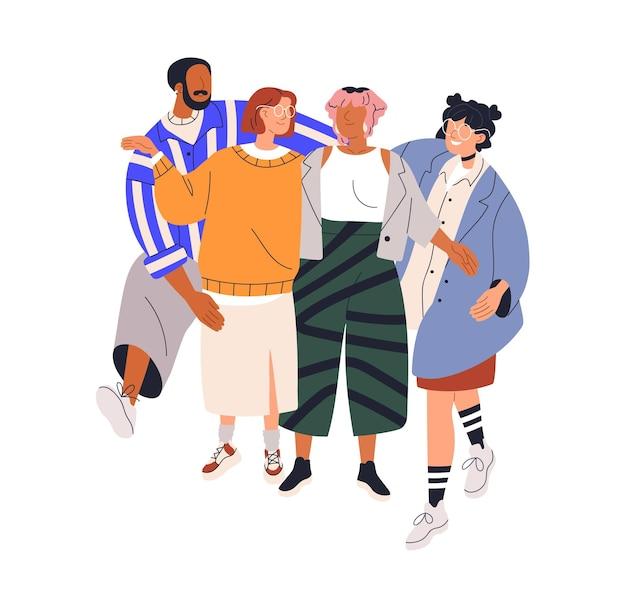Hawaii, also known as the Aloha State, is not just a tropical paradise but a land with a rich and complex history. When it comes to understanding the social dynamics of this beautiful archipelago, it’s important to explore the various social classes that existed in Hawaiian society. From the ancient times to the present day, Hawaii has experienced significant changes in its social structure. So, let’s dive into the captivating world of Hawaiian social classes and discover how they shaped the islands’ culture.
In this blog post, we’ll delve into the topic of social classes in Hawaii. Along the way, we’ll explore intriguing questions such as whether Native Hawaiians have reservations, the social structure of Hawaii, who the United States acquired the islands from, and much more. So, grab your virtual lei and join me as we unravel the fascinating tapestry of Hawaiian society.
The Social Stratosphere of Hawaii: Unraveling the Different Social Classes
The Hawaiian islands conjure images of pristine beaches, vibrant flora, and a rich cultural heritage. But beyond its natural beauty, Hawaii harbored a diverse social fabric with distinct social classes. Let’s delve into the intricacies of Hawaiian society and explore its fascinating hierarchy.
The Ali’i: Nobility Fit for Paradise
At the apex of Hawaiian society stood the Ali’i, the noble class. These aristocrats were seen as descendants of the gods and held immense political power. Their genealogical lineage was as esteemed as the sight of a double rainbow after a sunshower. The Ali’i presided over large tracts of land and held authority over the commoners.
Kahuna: Masters of Wisdom and Magic
The Kahuna class comprised revered priests, healers, and practitioners of the sacred arts. These knowledgeable individuals held the key to the spiritual well-being of Hawaiian society. With their wisdom, they could navigate the complex chain of signs from nature, just like a skilled surfer riding towering waves. They commanded respect and awe, with their words and actions carrying the weight of ancient tradition.
The Kauwa: The Unfortunate Underclass
Amidst the beauty of Hawaii, there existed a darker side of society – the Kauwa. These unfortunate individuals, often prisoners of war or those who lost their status, were deemed the lowest of the low. They were as invisible as a gecko blending into lava rock, with no rights or privileges. Trapped in a cycle of servitude, they toiled for the Ali’i, fulfilling menial tasks and living on the fringes of society.
The Maka’ainana: The Commoners
The Maka’ainana formed the backbone of Hawaiian society. These hardworking individuals were the farmers, fishermen, craftsmen, and laborers who upheld the day-to-day operations of the islands. They were the beating heart, much like the rhythmic sounds of a hula dancer’s chanting and drumming. While they lacked the political power of the Ali’i, their contributions were essential for the society’s progression.
The Mahina: Celestial Rulers of Time
Beyond the earthly realm, the Mahina occupied a unique place in Hawaiian society. As the keepers of the lunar calendar, they possessed the knowledge to predict celestial events, planting seasons, and even the best times for fishing. They were the stargazers who could navigate the night sky as gracefully as a Hawaiian green sea turtle gliding through the ocean. Their wisdom ensured that the society remained in harmony with the rhythms of nature.
The Haole: The Foreigners
With the arrival of European explorers and settlers, a new social class emerged – the Haole. Originally referring to non-Hawaiians, the term eventually came to represent foreigners and Caucasians in general. They were as conspicuous as a sunburn on a pale-skinned visitor, bringing with them new customs, beliefs, and political influence that would forever shape the course of Hawaiian history.
A Mosaic of Uniqueness
Hawaiian society was a tapestry woven from diverse social classes. Each class played a crucial role, contributing its unique piece to the colorful mosaic of Hawaiian culture. Just like an exquisite lei made from fragrant blossoms delicately strung together, the interplay between the classes created a society that was beautiful, complex, and endlessly captivating.
So, as you wander through the captivating landscapes of Hawaii, take a moment to appreciate the intricacies of its social stratosphere, for it is a tale as fascinating as the island paradise itself.
Please note: The descriptions provided above are based on historical records and are not intended to diminish the complexity and diversity of traditional Hawaiian society.
FAQ: Social Classes in Hawaiian Society
Do Native Hawaiians have reservations
Contrary to the reservation system found in some Native American communities on the mainland, Native Hawaiians do not have reservations. However, they do possess a distinctive connection to the land, culture, and history of the Hawaiian Islands.
Does each Hawaiian island have its own government
While each Hawaiian island has its own unique character and local government, the State of Hawaii as a whole operates under a unified governance structure. It is important to note that the local governments of the individual islands are subordinate to the state government.
What were the different social classes in Hawaiian society
Hawaiian society was historically divided into distinct social classes. These classes were as follows:
Aliʻi (nobility)
The highest social class in Hawaiian society was the Aliʻi, which comprised the ruling chiefs and elite nobles. They held significant political power and owned extensive amounts of land.
Kahuna (priests)
The Kahuna were highly respected religious leaders and practitioners, responsible for rituals, healing, and maintaining spiritual harmony within the community.
Makainana (commoners)
The Makainana formed the majority of the population, consisting of farmers, fishermen, craftsmen, and laborers. They worked the land, provided goods and services, and contributed to the overall wellbeing of society.
Kauwa (outcasts)
The Kauwa were the lowest social class. They were often slaves, prisoners of war, or individuals guilty of serious crimes. Their social status was considered a result of spiritual pollution rather than birthright.
What was the 50th state of the United States
The 50th state to join the United States was Hawaii. On August 21, 1959, Hawaii officially became a state, bringing its unique culture, natural beauty, and Aloha spirit into the American family.
What is the social structure of Hawaii
Although the traditional social structure has evolved over time, Hawaii remains a culturally diverse and inclusive society. It embraces a multicultural ethos, appreciating the contributions of various ethnic groups while preserving and celebrating its indigenous Hawaiian roots.
What qualifies as Native Hawaiian
A Native Hawaiian refers to an individual who can trace their ancestry back to the indigenous Polynesian people who inhabited the Hawaiian Islands before the arrival of Europeans.
Who did the United States get Hawaii from
The United States acquired Hawaii through a controversial process. In 1898, the U.S. annexed Hawaii through a joint resolution of Congress. However, it is important to acknowledge that the annexation was not universally supported by the Hawaiian people.
Does each Hawaiian island have its own governor
No, Hawaii does not have individual governors for each island. The governor of Hawaii is responsible for overseeing the entire state. Local government officials, including mayors, county council members, and representatives, manage the affairs of their respective islands.
Do Native Hawaiians pay property tax
Native Hawaiians, like all residents of Hawaii, are subject to property taxes based on the value of their real estate holdings. However, there are certain exemptions, credits, and programs available that aim to alleviate the financial burden for qualified Native Hawaiians.
We hope these FAQs provide valuable insights into the social classes, history, and governance of Hawaii. If you have further questions or seek a deeper understanding, feel free to explore our blog for more captivating content.

